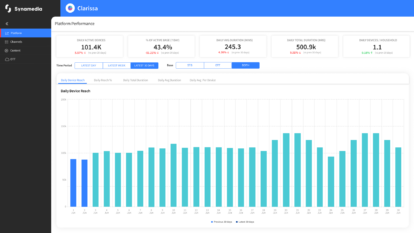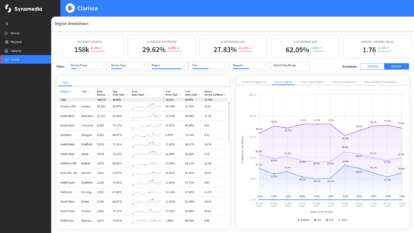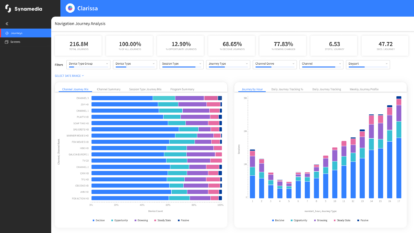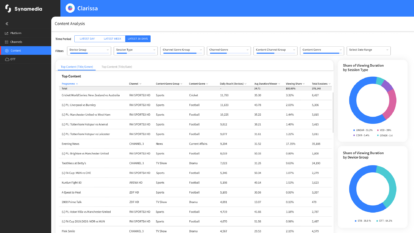We’ve all been there: streaming our favorite series or watching our team finally get a rare chance at goal. And then it happens—fuzzy picture, frozen action, and the dreaded spinning wheel of death. Coventry City probably wouldn’t have scored anyway… but maybe they did?
Why does this happen?
Having worked in streaming for many years, I can tell you there are countless reasons. Streaming is complicated—really complicated. While traditional DVB broadcast comes with its challenges, it pales in comparison to the millions of variables involved in streaming.
Since “CDN” is in my job title, let me focus on how CDNs can make or break live streaming success. And because it’s the holiday season, I’ll use a festive analogy: the annual Christmas getaway.
Picture this: it’s that time of year—cold but not yet snowing. The car is packed with gifts, the kids are buckled in the back, and Chris Rea’s Driving Home for Christmas is playing on the radio. You pull out of your driveway, navigate some side streets, and merge onto the main road… only to find yourself stuck on “The Road to Hell”.
Everyone’s on the road, trying to deliver their packages of Christmas joy. But the problem is clear: the roads weren’t built to handle this much traffic all at once. Similarly, your ISP might boast super-fast backbone connections, but they didn’t plan for everyone to show up at the same time. Whether it’s Christmas or a big sports event, the sudden surge creates chaos.
Public Roads vs. Public CDNs
Our public roads are a lot like public CDNs: open to everyone, but not optimized for specific types of traffic. Accidents, road closures, and misrouted deliveries are inevitable. Imagine a lorry full of game downloads clogging up a rural route while a crash on the backbone brings everything to a standstill.
The result? You’re stuck, nowhere to go, with a car full of restless kids. Frustrating, isn’t it? You start wishing for private roads, free of the chaos.
Enter Private CDNs
This is where private CDNs can save the day (for streaming, not the Christmas rush). Think of Edge Caching as your local convenience store: it only requires one delivery but can serve the whole neighborhood. With fewer long-distance journeys, the highways clear up, traffic flows smoothly, and everything runs more efficiently.
Private CDNs allow you to build a dedicated network between caches, ensuring clear routes that aren’t overcrowded. Because these roads are just for you, they don’t need as much capacity, saving costs while delivering superior performance.
Too Expensive? Too Complex? Think Again.
At Synamedia, we’ve been deploying private CDNs for years, supporting some of the largest live sports events and millions of concurrent viewers. Recently, we’ve been working to make this technology more accessible to a wider range of streamers.
Come talk to us at Synamedia to learn how our Fluid Edge technology, content steering, and CDN expertise can help you achieve buffer-free streaming with complete control.
Handling Congestion
Another challenge is congestion caused by ever-larger “vehicles” on the road—think UHD SUVs hogging all the space. Synamedia addresses this with next-generation, AI-driven encoding technologies that minimize packet sizes, allowing your traffic to glide through even the tightest gaps.
Synamedia: Streaming for Life, Not Just for Christmas
Let’s future-proof your streaming operations and ensure you never face the ghost of streaming future.
Reach out to our sales team at: https://www.synamedia.com/contact/
About the Author
Robin Oakley, Senior Director, Edge CDN Solutions
Robin Oakley is Senior Director for Synamedia’s Edge CDN solutions. He is responsible for driving strategy and growth for Synamedia’s portfolio of smart and cost-efficient CDN technologies. With over 20 years’ experience in the broadcast technology industry, he has worked for many of the industry’s biggest brands, including Discovery and MTV, leading diverse projects and teams around the world. Robin’s expertise covers a wide range of content distribution technologies including DVB, IP and OTT streaming.
Most recently he spent seven years at DAZN as VP, Distribution Engineering, where he built and led a team responsible for the streaming distribution of thousands of live sporting events to millions of subscribers globally.
Robin is based in the United Kingdom and has a Bachelor of Science degree in physics and chemistry from the University of Leeds.












